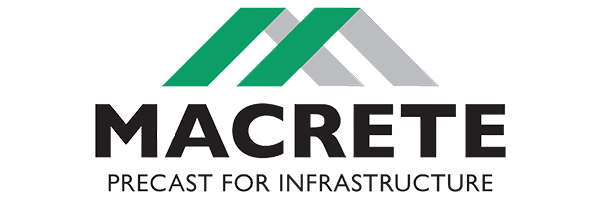BRP – Raw Water Project – Birmingham Resilience Project (2020)
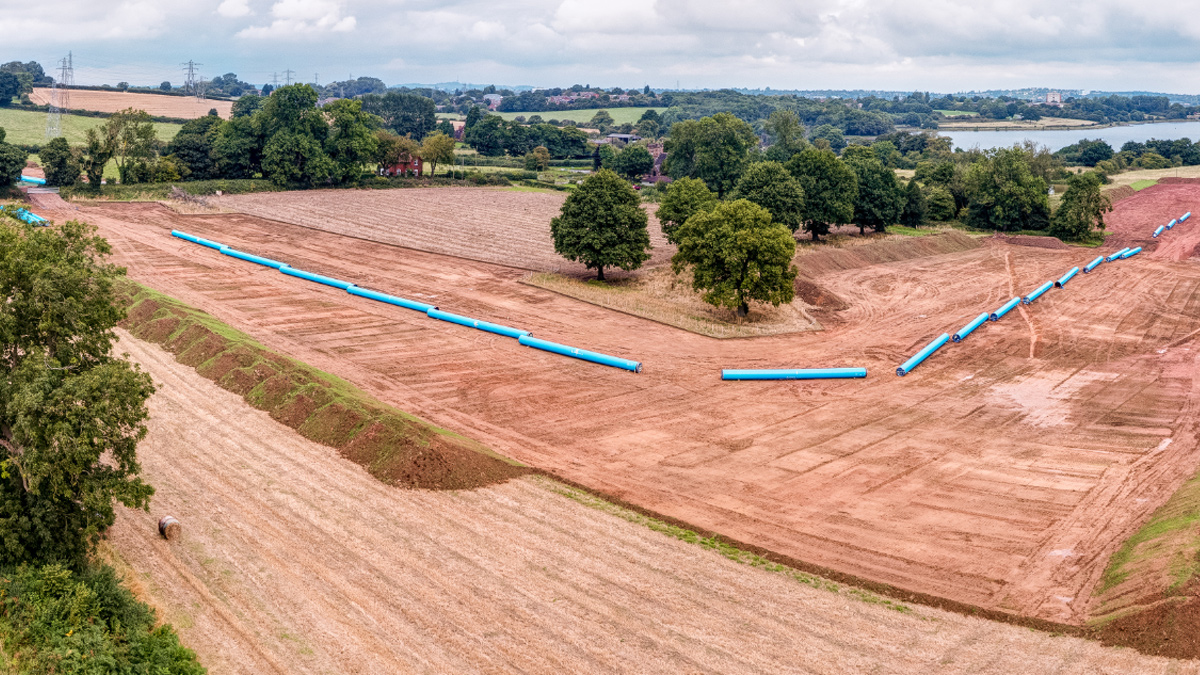
Pipeline stringing - Courtesy of Severn Trent
The Birmingham Resilience Project (BRP) is designed to provide a backup source of raw water from the River Severn to the water treatment works that serves Birmingham. During planned or unplanned outages of the primary water source, the raw water system will abstract water from the River Severn between October and March and supply 117 Ml/D of raw water to the treatment works for 50 days a year.
Project overview
Water will be abstracted from the River Severn using the new river intake. From the intake, the river water will be gravity fed via a 330m long tunnel to the new pump station. The 4 (No.) new 2MW pumps in the pump station (3 (No.) duty, 1 (No.) standby) will then pump the water via the new 21 km long pipeline to the break pressure tank, from where it gravitates via 5km of new pipeline to the water treatment works.
All River Severn raw water in excess of >40 Ml/d must receive powdered activated carbon (PAC) dosed for the primary treatment of pesticides, metaldehyde and for partial organics removal. The project has installed a PAC treatment plant at the outlet of the break pressure tank.
Water quality is monitored at the river intake, the break pressure tank and at the connection to the on-site reservoir at the water treatment works. The raw water system finishes at the connection to the reservoir inlet at the treatment works.
Progress update
The BRP Raw Water Programme had outcome delivery incentive milestones to achieve by March 2020 related to time and performance. To achieve these milestones, the project had to show that the system could abstract and pump 117 Ml/D of River Severn water from the river intake and pumping station site, along the new 26km pipeline and assets to the water treatment works serving Birmingham.
These milestones were achieved on time in March 2020. This was a fantastic achievement by Severn Trent’s appointed principal design and build contractor on the programme, Barhale, alongside the Severn Trent team, avoiding millions of pounds from performance and time penalties.
The remaining works left to complete on the programme are the final full system commissioning tests and reinstating the land and sites where the 26km pipeline passes through, with an expected completion of October 2020.
Birmingham Resilience Project: Raw Water Workstream supply chain – key participants
- Client: Severn Trent
- Principal contractor: Barhale plc
- Mechanical & electrical: Ward & Burke
- Technical documentation: 3rd Light Media
- ICA: Boulting Ltd
- Reinforced concrete: John O’Sullivan
- TBM: Herrenknecht
- Piling: J Murphy & Sons Ltd
- Aarsleff sheet piled cofferdam: Aarsleff Ground Engineering
- Pipeline pressure testing: J Murphy & Sons Ltd
- Highlift pumps: Flowserve
- Soft starters: Rockwell Automation
- Switchboard: ATG
- Steel pipe: Pipe Source UK Ltd
- Valves: Severn Utilities Valves
- PAC dosing: Transvac Systems Ltd
- Inlet fine screens: Hydrolox
- Transformers: ABB
- Metal fabrications: BCS
- Structural steelwork: O’Hare Steel
- Weholite® lining of intake tunnel: SDS Limited
- Landfill gas protection: Visqueen
- Scale modelling: BHR Group
- CFD modelling: Wilde Analysis
- Hydraulic modelling: Hydraulic Analysis Ltd
- Precast concrete structural elements: Shay Murtagh Precast
- Precast concrete shafts: Macrete (Ireland) Ltd
- Precast concrete shafts: FP McCann
- Jacking pipes: Stanton-Bonna
- Pipe fittings, bends, tees, reducers: George Green (Keighley) Ltd
Raw Water Workstream – Programme elements
The five elements of the raw water workstream are the river intake, the pumping station, the pressure tank and powdered activated carbon plant, the 26km pipeline, and pipeline sweetening. Details of these elements are noted below.
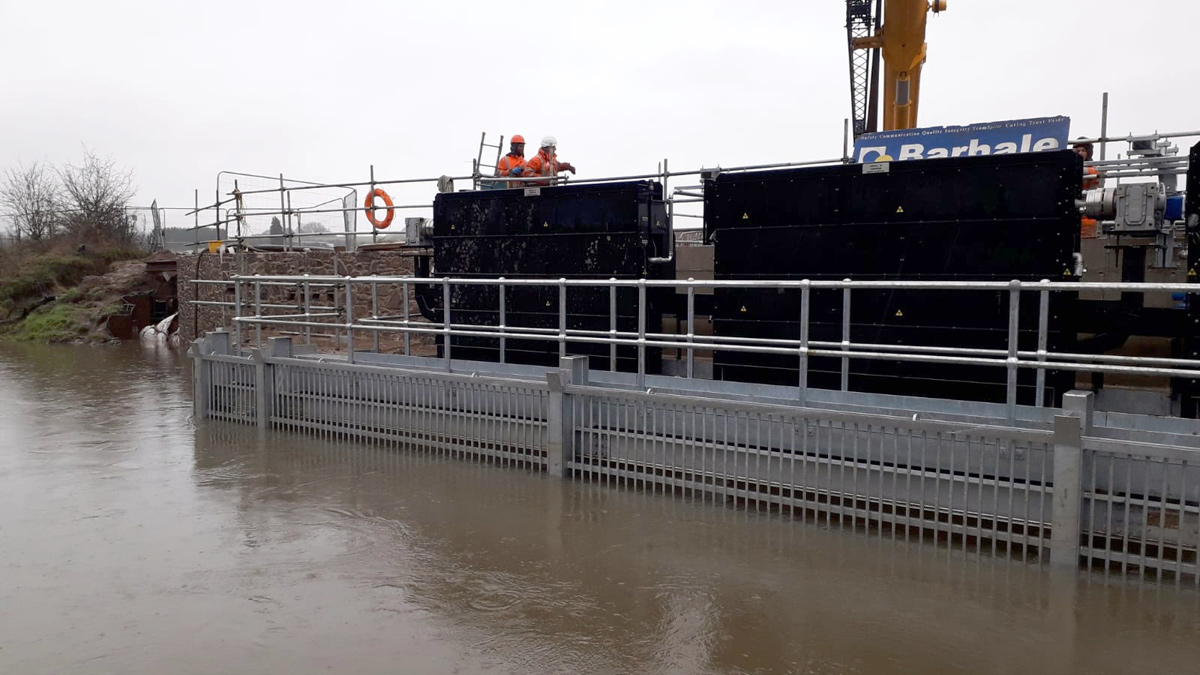
River Intake within the River Severn – Courtesy of Severn Trent
River intake
At the river intake, raw water is abstracted from the River Severn passing though bar screens to remove coarse debris followed by fine band screens which remove fine debris.
The band screens are backwashed with filtered river water to remove debris and finer heavy debris settles out in grit traps.
Upgrades have been completed to the treatment works feeding Birmingham to enable water from the River Severn water to be treated as a new raw source, within conservative raw water parameters. A robust water quality monitoring and control system is in place to ensure that the raw water abstracted is within the treatment works treatment design parameters prior to delivery for treatment.
The river intake is now fully built and commissioned.
Pumping station
The pumping station building comprises of a 17m deep shaft incorporating 4 (No.) Flowserve supplied 2 MW high lift pumps (3 (No.) duty /1 (No.) standby) and a separate room for a surge suppression system consisting of 2 (No.) surge vessels with cross connection enabling them to work as one complete unit.
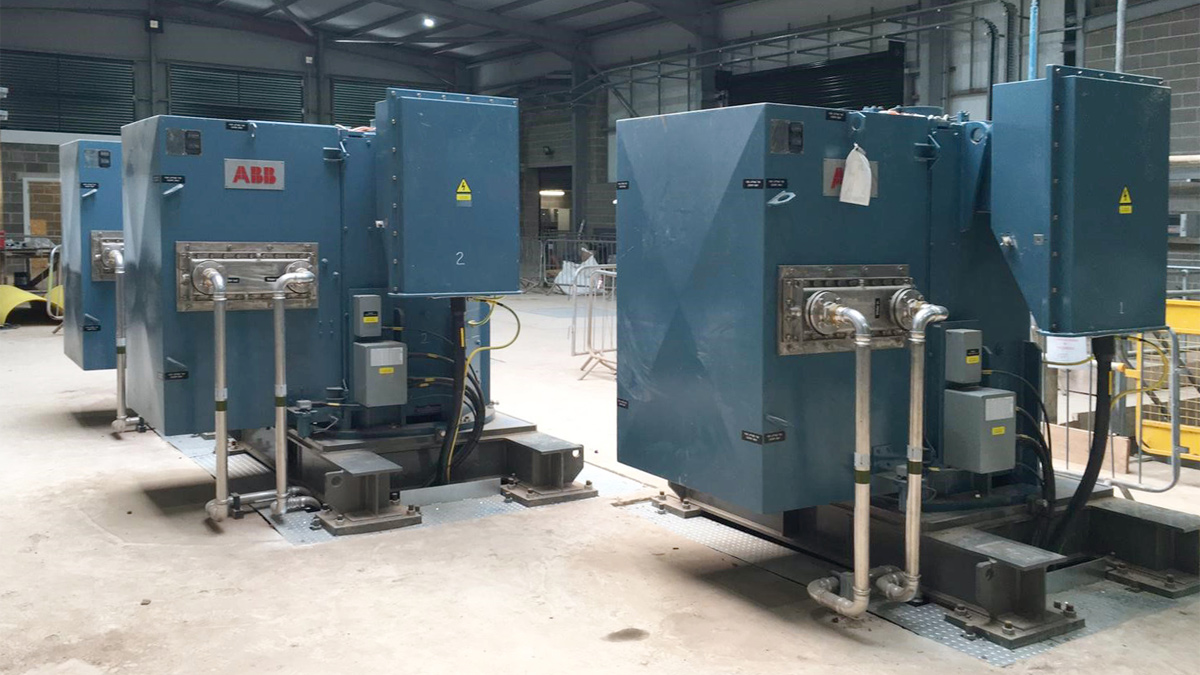
Pump motors on top of the 17m shaft housing the pumps inside the pump station – Courtesy of Severn Trent
Air compressors create an air cushion within the surge vessels, which absorb pressure increases when the water pumps are stopped. The pumping station has a passive ventilation system that has been installed to prevent the build-up of methane gas within the pump house structure as it has been constructed close to the boundary of an old landfill site. The pump station is fully built, and the final commissioning tests have commenced.
Break pressure tank and powdered activated carbon plant
The break pressure tank (BPT), is a 2 Ml capacity tank into which the pumps discharge their pumped flow; from this point the flow continues under gravity to the treatment works. The BPT is a transition and balancing tank between the pumping section of the new pipeline and the gravity section.
The powder activated carbon (PAC) plant provided by Transvac Systems Ltd is dosed into the gravity main downstream of the BPT. The PAC is the primary form of treatment for pesticides, including metaldehyde and partial organics removal.
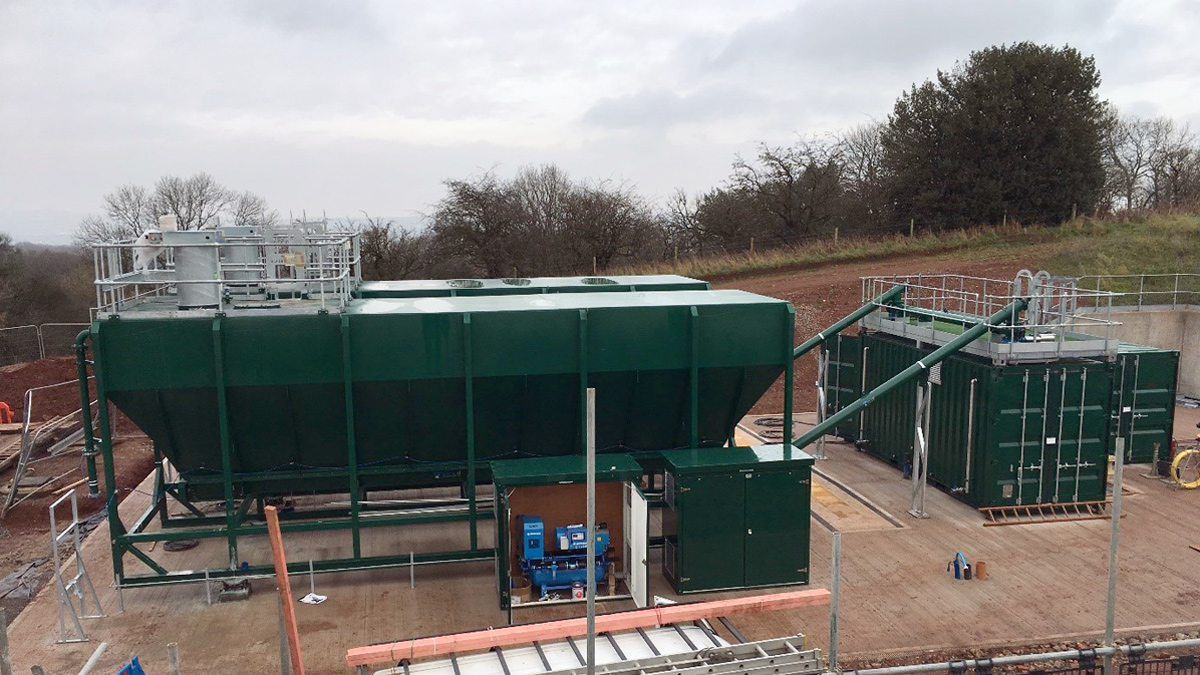
Powdered activated carbon plant – Courtesy of Severn Trent
The flow from the BPT to the on-site reservoir will be regulated by a flow control valve at the on-site reservoir inlet basin and will maintain the level of the BPT to a set point level.
The BPT and PAC plant are fully built and commissioned, and full system commissioning tests have commenced.
Sweetening flow mode
Water for sweetening the pipeline when abstraction is not taking place, is extracted from the WTW on-site reservoir inlet chamber and pumped to the break pressure tank along the pipeline. Sweetening water then flows under gravity from the break pressure tank to the pumping station and river intake where it is discharged into the River Severn under a permit from the Environment Agency.
The sweetening flow mode is designed to remove any standing river water within the pipeline and ensure that the water in the pipeline is turned over sufficiently to prevent stagnation. The pipeline will be left in sweetening mode when not in abstraction mode, rather than empty, as it shortens the time required to get the raw water system ready for running if it is required in an emergency.
The sweetening cycle will include an initial flush when the high lift pumps are inhibited. The duty sweetening pump shall run at a rate of 3.2 Ml/d for 7 days to remove any standing River Severn water from the pipeline and break pressure tank.
After the initial sweetening flush, the sweetening system will operate for a minimum of 18 hours per week at 3.2 Ml/d ensuring the water is refreshed every 60 days.
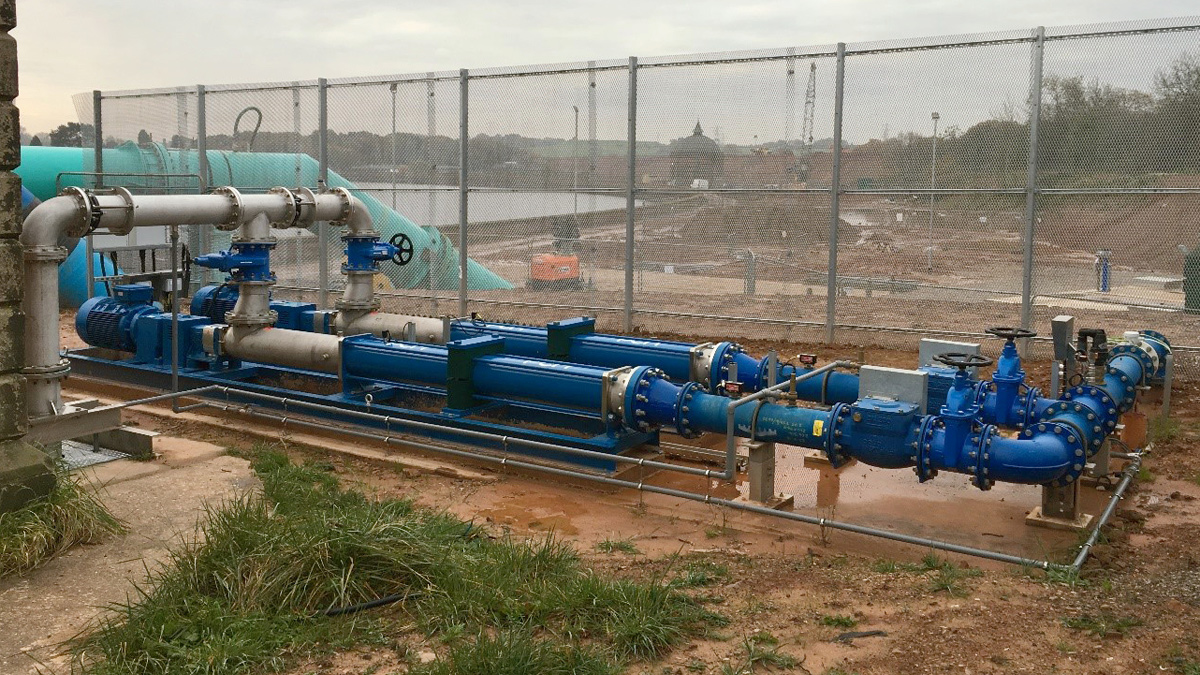
Sweetening flow pumps at the water treatment works – courtesy of Severn Trent
Pipeline
A 1045mm diameter steel pipe with an internal and external coating has been installed from the pumping station to the water treatment works serving Birmingham, which crosses roads, rail routes and canals and major infrastructure most notably:
- M5 motorway.
- River Stour.
- Staffordshire & Worcestershire Canal.
- Worcestershire railway line.
These were crossed using a tunnel boring machine (TBM) that carried out pipe jacking operations between a launch and reception shaft.
The pipeline was split into sections for testing purposes and pressure tested. All sections have successfully passed their pressure tests and the pipeline has been fully connected and commissioned. Reinstatement of the land impacted by the pipeline is ongoing and is aimed to be completed by October 2020.
Conclusion
The achievement of the OFWAT agreed milestones on the Birmingham Resilience Programme, despite the time pressures and challenges that were faced along the way, on what has been the largest capital programme delivered in Severn Trent’s recent history, is testament to the significant efforts of all of the Severn Trent teams and contractors involved. The assets that have been delivered will leave a great legacy for the resilience of the water supply to the people of Birmingham for future generations.












